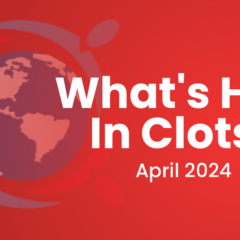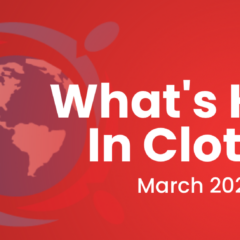Last updated on
Clot Chronicles: The REDUCE-IT Trial with Dr. Deepak Bhatt
The Clot Chronicles has a special guest host, Dr. Deepak Bhatt. Today, Dr. Bhatt discusses the results of the recent REDUCE-IT trial.
Hello, I am Deepak Bhatt, MD from Brigham and Women’s Hospital and Harvard Medical School. It is a great pleasure for me to speak to you about the results of REDUCE-IT. This is a randomized clinical trial of over 8,000 patients with elevated triglyceride levels and by elevated I mean between 135 and 500 mg/dL, who either had established cardiovascular disease or diabetes plus an additional cardiovascular risk factor, so secondary prevention and a sub group of primary prevention patients as well.
These patients were followed for an average of almost five years after being randomized either to a placebo or a drug called icosapent ethyl, which is a highly purified form of icosapentanoic acid or EPA and an ethyl ester of that. So it’s actually a drug that is a prescription drug that is currently available for patients who have trygliceride levels greater than 500 mg/dL to prevent pancreatitis, but we were studying it in patients with a lower degree of triglyceride elevation to see if it could reduce cardiovascular events. And, indeed it did.
Our primary endpoint was 5-point MACE, consisting of cardiovascular death, myocardial infarction, stroke, coronary revascularization, or hospitalization for unstable angina. What we found for that primary endpoint was a 25 percent relative risk reduction and approximately a 5 percent absolute risk reduction. That works out to a number needed to treat of about 21 or so, and a P value that was very significant, well under 0.001. So these were very significant findings in terms of statistical significance, in terms of relative risk reduction, and in terms of absolute risk reductions. That was our primary endpoint.
Our secondary endpoint was cardiovascular death, myocardial infarction, or stroke, so called hard endpoints. There as well, there was a significant risk reduction. In fact, CV death as a stand alone endpoint had a 20 percent relative risk reduction that was statistically significant. As well, MI was reduced by 31 percent and stroke by 28 percent. So large and significant reductions in each of those components of the composite endpoint as well.
What does all of this mean? I think it actually is a pretty big advance in the field of cardiovascular disease prevention because it opens up a whole new avenue towards residual risk reduction. That is, in patients who are already on statins, as were the patients in this trial, what can we do to further reduce their cardiovascular risk? And now with REDUCE-IT we have found a whole new pathway to that risk reduction. What is the mechanism of benefit? Well, we are doing analysis to try and sort that out. Certainly, this drug that we studied, icosapent ethyl, reduces triglycerides so part of the risk reduction is certainly from triglyceride lowering, but this drug also has other properties that have been shown in-vivo that might translate into benefits in terms of clinical endpoints. For example, the drug has been shown to have anti-inflammatory effects and in different laboratory settings it has been shown to have membrane stabilizing effects, that is the cell membranes appear to be stabilized when this compound is used, and that may explain some of the results that we saw in the trial, such as significant reductions in sudden cardiac death and in cardiac arrest.
Overall, I think that REDUCE-IT gives us another option for cardiovascular prevention on top of and above statin therapy. I hope that in years to come this trial will be the first of many that has opened up an entirely new era of cardiovascular prevention. Of course, there is much more that will come out of REDUCE-IT. In the short and intermediate term, there are all sorts of analysis that we planned, such as sophisticated bio-marker analysis to help understand exactly what caused this clinical benefit, cost-effectiveness analysis will soon be underway, and of course we will take a closer look at different aspects of the data.
One issue that did come up was that there was a significant increase in atrial fibrillation noted with the study drug, though the absolute increase was only about a percent. Never the less, it is something we intend to explore more. Reassuringly, at least in the trial overall, there was no excess in stroke, however rather a significant 28 percent reduction in stroke. As well, there was a trend towards more bleeding, though no significant excess in intracranial or fatal hemorrhage, or gastrointestinal hemorrhage. So, there were some different safety issues that we need to sort out also, but from a big picture perspective with the large absolute and relative risk reduction in the endpoints I mentioned, things like death from cardiovascular causes, myocardial infarction, stroke, hospitalization for unstable angina, and coronary revascularization procedures as composites and individual endpoints, all of these were significantly reduced. Therefore, I do think that this now provides physicians with another important tool to help patients and prevent future ischemic events.



